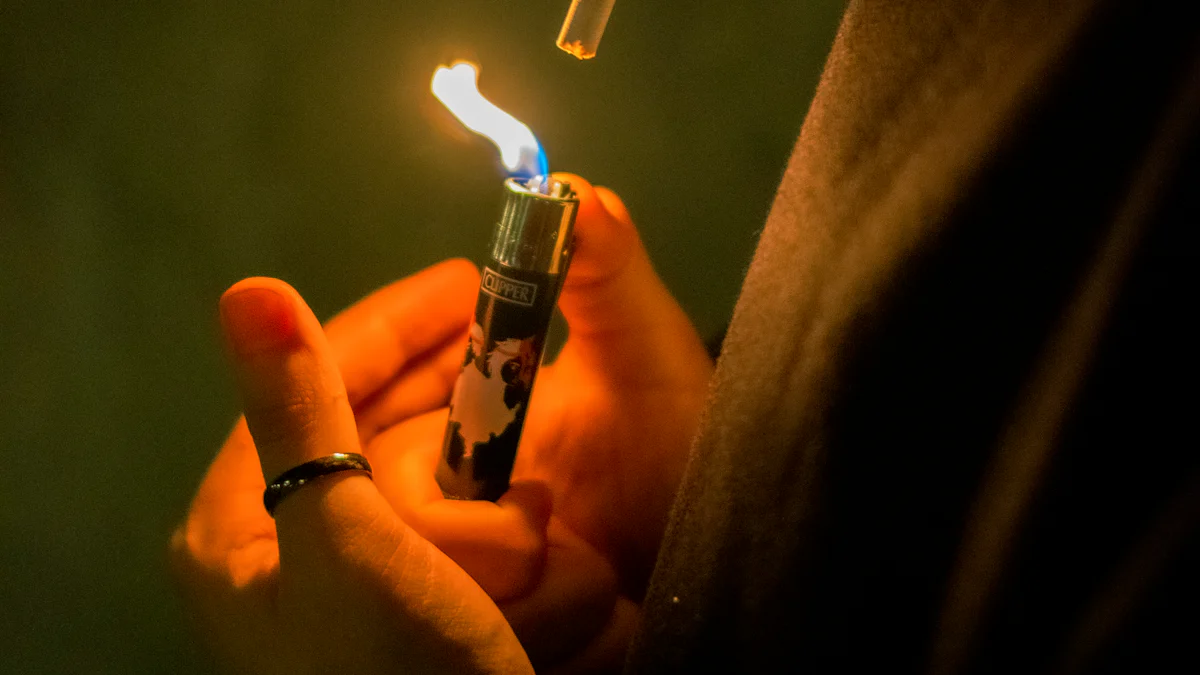How to choose lighter making machine types

Choosing the right lighter making machine types, whether semi-automatic or automatic, can significantly impact your production process. Selecting the wrong option could lead to delays, higher costs, or compromised product quality. By understanding the differences between semi-automatic and automatic machines, you can ensure efficiency and reliability in your operations. Let’s explore why this decision is so important.
Key Takeaways
- Learn about the three types of lighter machines: manual, semi-automatic, and fully automatic. Each one fits different needs.
- Think about your goals and budget before picking a machine. Choosing wisely saves money and helps you meet your production needs.
- Focus on safety features and support from the maker. A good machine and helpful service make work easier.
Overview of Lighter Making Machine Types

When it comes to lighter making machine types, you’ve got three main options: manual, semi-automatic, and fully automatic machines. Each type has unique features and benefits, so understanding them can help you make the right choice for your production needs. Let’s break them down.
Manual Lighter Making Machines
Manual machines are the simplest option. They require you to operate them by hand, which means you’ll have full control over the process. These machines are great if you’re just starting out or producing lighters on a small scale. They’re also budget-friendly, making them a good choice if you’re working with limited funds.
However, manual machines can be slow. Since they rely on human effort, they’re not ideal for large-scale production. You might also find them tiring to use over long periods. But if you value precision and don’t need high output, they could be a solid option.
Semi-Automatic Lighter Making Machines
Semi-automatic machines strike a balance between manual and fully automatic options. They handle some tasks automatically while still requiring your input for others. This makes them faster than manual machines but still gives you some control over the process.
These machines are perfect for medium-scale production. They’re more efficient than manual machines and less expensive than fully automatic ones. If you’re looking to scale up your operations without breaking the bank, semi-automatic machines might be the way to go.
Fully Automatic Lighter Making Machines
Fully automatic machines are the top choice for large-scale production. They handle the entire process from start to finish with minimal input from you. This means you can produce a high volume of lighters quickly and consistently.
These machines are all about efficiency. They save time, reduce labor costs, and ensure uniform quality. However, they come with a higher price tag. If you’re running a large operation and need maximum output, investing in a fully automatic machine could be worth it.
Tip: Think about your production goals and budget before choosing a machine type. The right choice depends on what you need most—control, efficiency, or scalability.
Key Considerations for Choosing the Right Machine
Production Capacity and Scale
Think about how many lighters you need to produce daily or monthly. If you’re running a small operation, a manual or semi-automatic machine might be enough. But for large-scale production, you’ll need a fully automatic machine to keep up with demand. Matching the machine’s capacity to your production goals ensures you won’t overpay for features you don’t need or fall short on output.
Type of Lighters to Be Manufactured
Not all machines can handle every type of lighter. Are you making disposable lighters, refillable ones, or something more specialized? Each type has unique manufacturing requirements. Make sure the machine you choose is designed to produce the specific lighter style you have in mind.
Automation and Ease of Use
How much control do you want over the process? Fully automatic machines are great for efficiency but might feel less hands-on. Semi-automatic machines offer a balance, while manual machines give you complete control. Also, consider how easy the machine is to operate. A user-friendly design can save you time and reduce errors.
Material Handling Capabilities
Lighter production involves handling materials like plastic, metal, and fuel components. Check if the machine can manage these materials efficiently. A machine with good material handling capabilities will reduce waste and improve overall productivity.
Safety Features and Compliance
Safety should always be a top priority. Look for machines with built-in safety features like emergency stops and protective guards. Also, ensure the machine complies with local safety regulations. This protects your workers and helps you avoid legal issues.
Energy Efficiency and Operational Costs
Energy-efficient machines can save you money in the long run. Check the machine’s power consumption and maintenance requirements. A machine with lower operational costs might have a higher upfront price but could be more cost-effective over time.
Manufacturer Reputation and Support
The company behind the machine matters. Choose a manufacturer with a solid reputation for quality and reliability. Also, check if they offer good customer support, including training, maintenance, and spare parts. A dependable manufacturer can make a big difference in your overall experience.
Pro Tip: Always compare multiple options before making a decision. The right machine will align with your production needs, budget, and long-term goals.
Comparing the Pros and Cons of Lighter Making Machine Types
Manual Machines: Features, Advantages, and Disadvantages
Manual machines are the simplest of all lighter making machine types. They’re operated entirely by hand, giving you complete control over the production process. These machines are affordable and perfect for small-scale operations or when you’re just starting out.
The biggest advantage? Precision. You can oversee every step, ensuring quality. Plus, they’re easy to maintain and don’t require much technical expertise. However, they’re not ideal for high-volume production. Since they rely on manual labor, they can be slow and tiring to use for extended periods. If you’re aiming for efficiency, this might not be the best option.
Semi-Automatic Machines: Features, Advantages, and Disadvantages
Semi-automatic machines combine manual effort with automation. They handle repetitive tasks, leaving you to focus on more critical aspects. This makes them faster than manual machines while still offering some control.
These machines are great for medium-scale production. They’re more efficient and cost-effective than fully automatic machines. However, they still require some manual input, which can slow things down compared to fully automated options. Maintenance might also be slightly more complex than manual machines.
Fully Automatic Machines: Features, Advantages, and Disadvantages
Fully automatic machines are the powerhouse of lighter making machine types. They handle the entire process with minimal input from you. This means faster production, consistent quality, and reduced labor costs.
The downside? They’re expensive. The upfront cost can be high, and they require skilled operators for setup and maintenance. But if you’re running a large-scale operation, the efficiency and output make them worth the investment.
Note: Choose a machine that aligns with your production goals and budget. Each type has its strengths and weaknesses, so think about what matters most to you.
Choosing the right lighter making machine is a big deal. It affects your production speed, costs, and product quality. Take time to understand the different machine types and their features.
- Think about your production goals.
- Match the machine to your budget and technical needs.
Tip: Talk to manufacturers or experts for advice. Always prioritize safety, efficiency, and long-term reliability. This ensures your investment pays off!
FAQ
What’s the best lighter making machine for beginners?
Manual machines are perfect for beginners. They’re affordable, easy to use, and great for small-scale production. You’ll have full control over the process.
How do I know if a machine is energy-efficient?
Check the machine’s power consumption rating. Look for models labeled as energy-efficient or those with lower operational costs over time.
Can one machine produce all types of lighters?
Not always. Machines are often designed for specific lighter types. Verify the machine’s compatibility with the lighter style you plan to manufacture.


